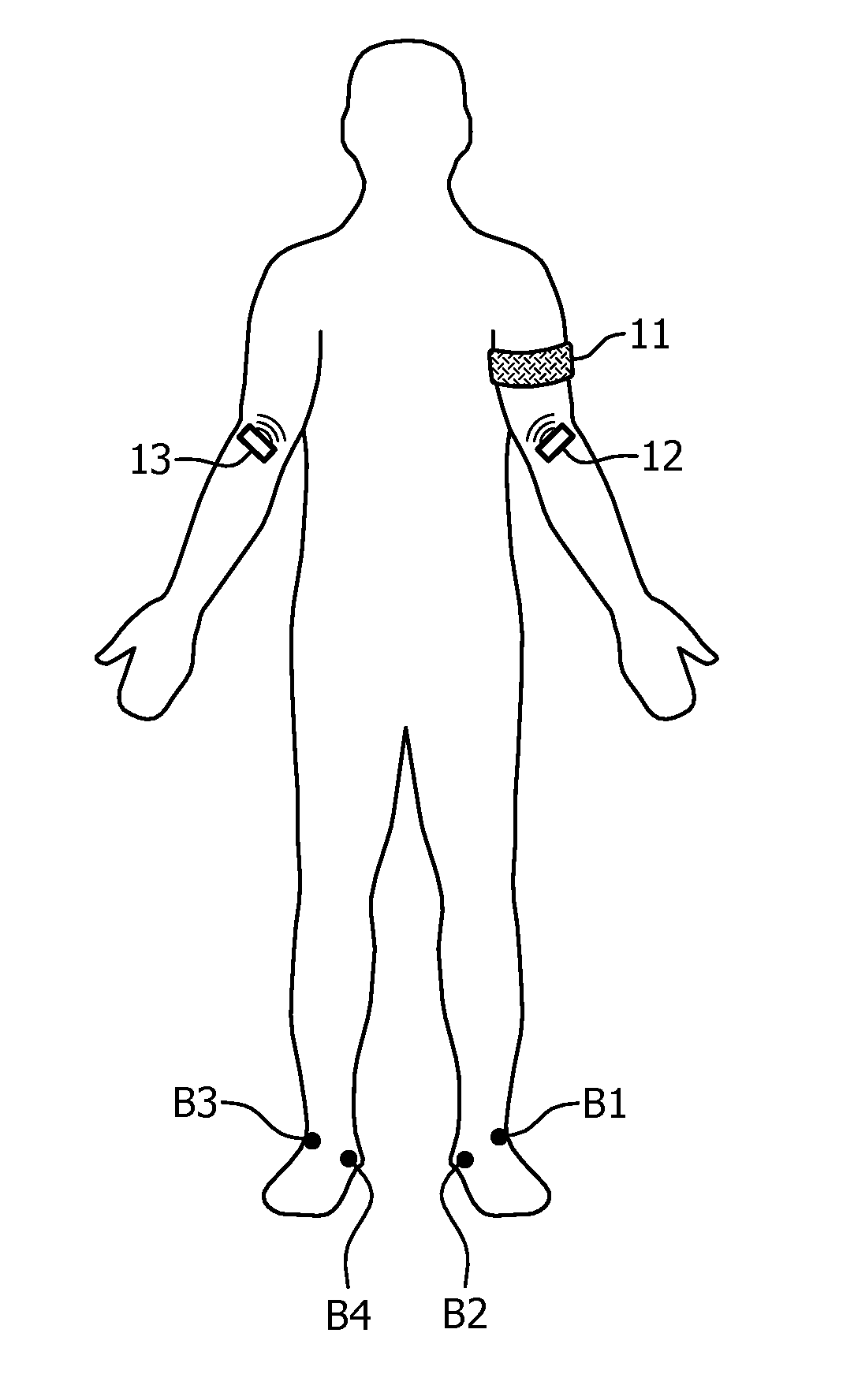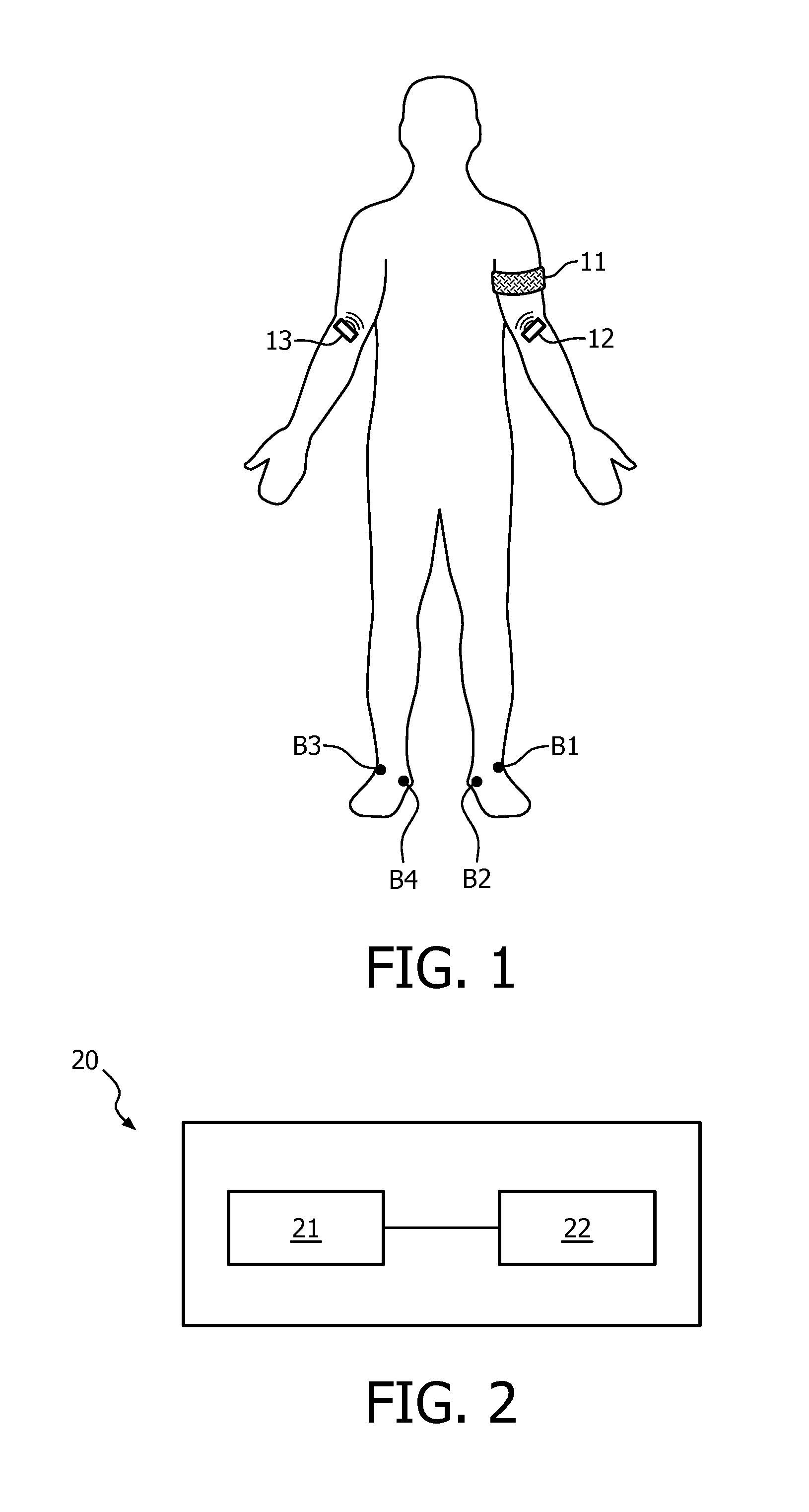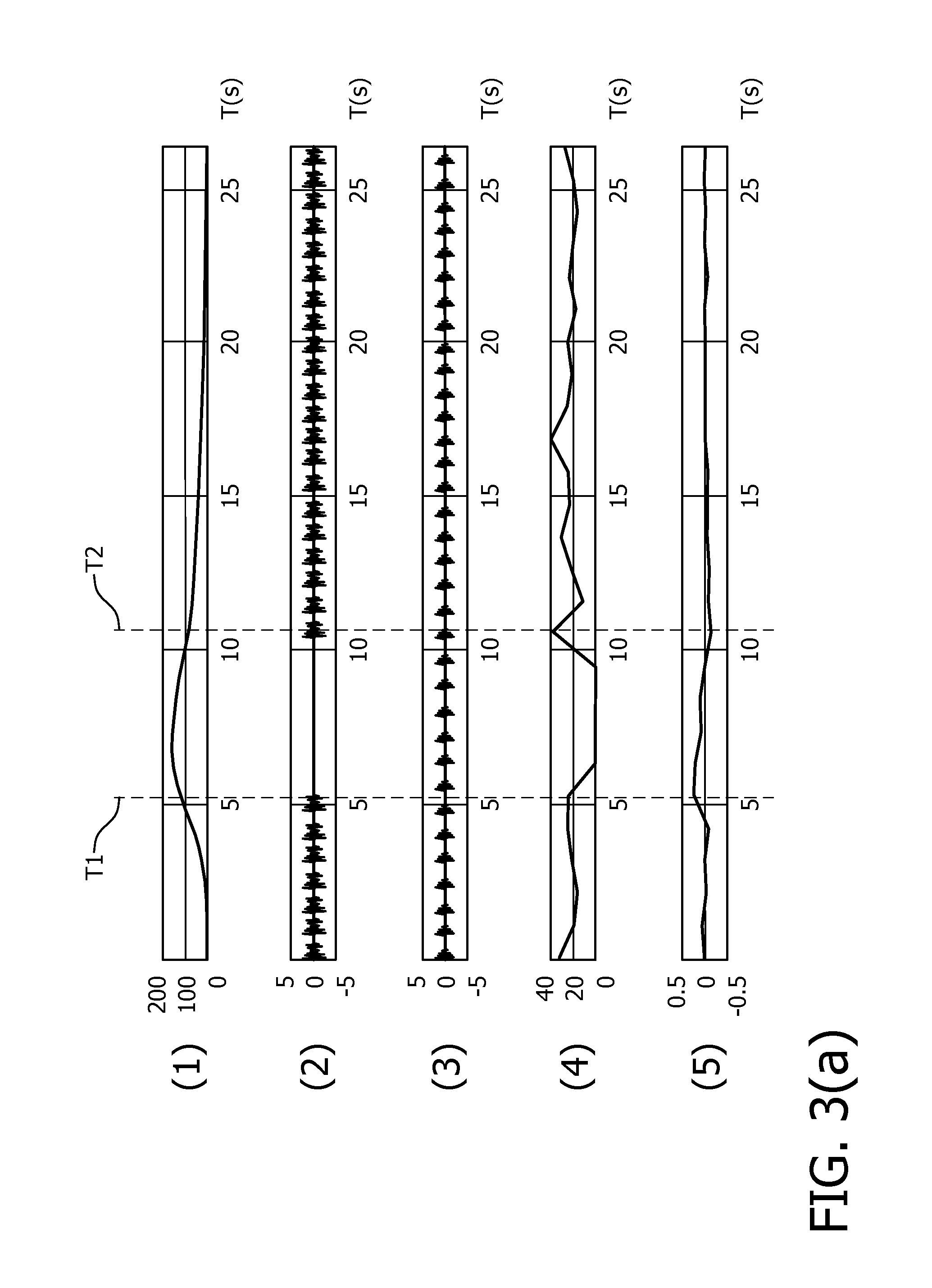Method, device and system for determining the open/closed switch moment of an artery of interest under a changing pressure
a technology of open/closed switch and artery, applied in the field of doppler ultrasound, can solve the problems of false determination of the open/closed switch moment, the inability to use the three features mentioned above, and the inability to correctly detect the last sound in the inflation phase and the first sound in the deflation phas
- Summary
- Abstract
- Description
- Claims
- Application Information
AI Technical Summary
Benefits of technology
Problems solved by technology
Method used
Image
Examples
Embodiment Construction
[0045]The embodiment of the present invention will be described hereinafter in more detail with reference to the drawings.
[0046]FIG. 1 presents an example of the layout of the cuff and dual-transducers during ABI measurement. As can be seen from FIG. 1, the cuff 11 is worn on the left arm to block the brachial artery (the artery of interest). One Doppler ultrasound transducer (the first Doppler ultrasound transducer) 12 is placed on the same arm as the cuff and another Doppler ultrasound transducer (the second Doppler ultrasound transducer) 13 is placed on the reference artery in the other arm without the effect of the cuff. If the two Doppler ultrasound transducers are well positioned, they will sense the blood flow signals of the arteries which are just beneath the transducers.
[0047]During the measurement, the signal from the blood flow in the artery of interest detected using the first Doppler transducer 12 will show a sudden change as the artery of interest is occluded by the cu...
PUM
 Login to View More
Login to View More Abstract
Description
Claims
Application Information
 Login to View More
Login to View More - R&D
- Intellectual Property
- Life Sciences
- Materials
- Tech Scout
- Unparalleled Data Quality
- Higher Quality Content
- 60% Fewer Hallucinations
Browse by: Latest US Patents, China's latest patents, Technical Efficacy Thesaurus, Application Domain, Technology Topic, Popular Technical Reports.
© 2025 PatSnap. All rights reserved.Legal|Privacy policy|Modern Slavery Act Transparency Statement|Sitemap|About US| Contact US: help@patsnap.com



